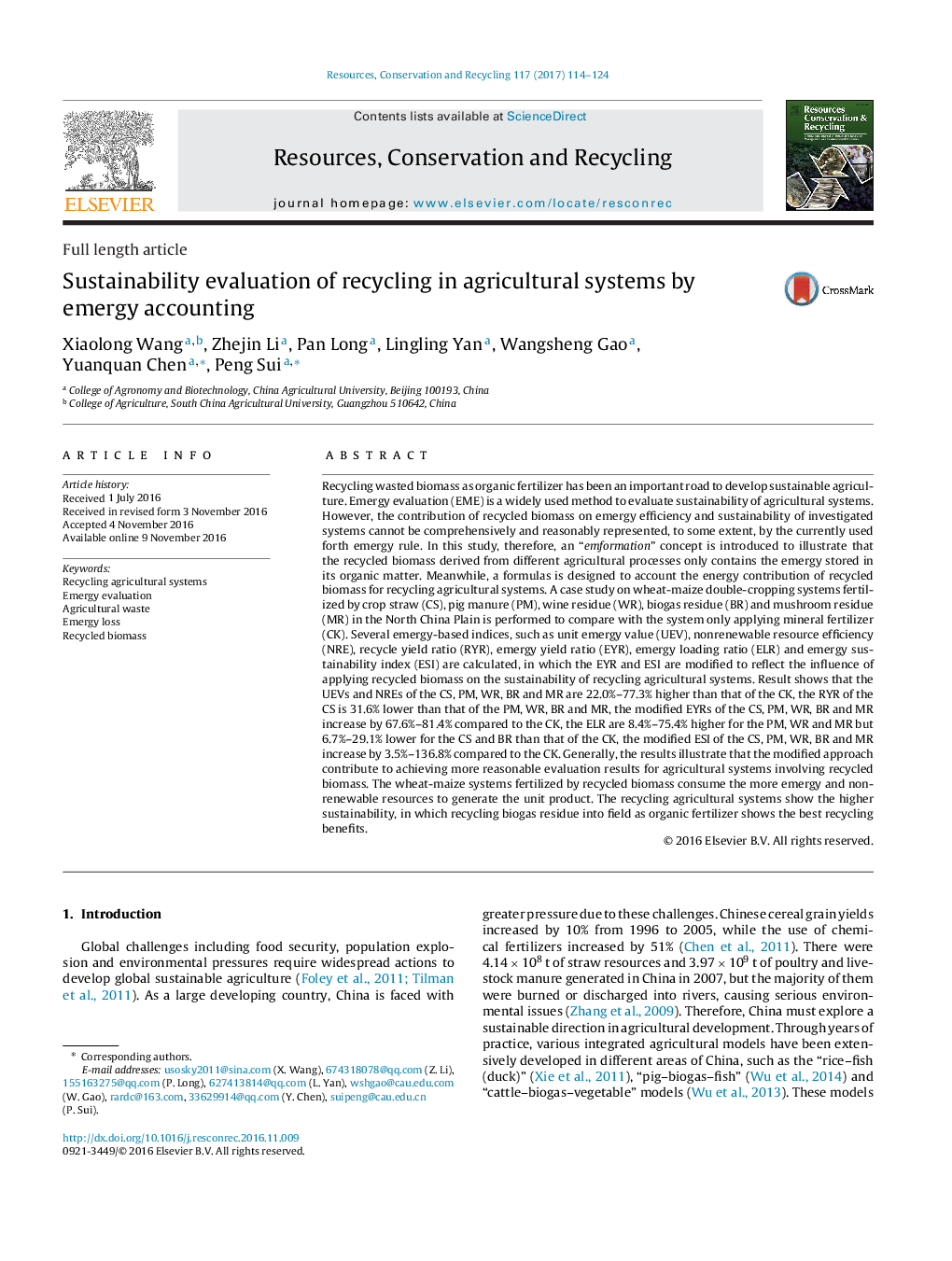| Article ID | Journal | Published Year | Pages | File Type |
|---|---|---|---|---|
| 5118892 | Resources, Conservation and Recycling | 2017 | 11 Pages |
â¢Recycled biomass only contains the emergy stored in its organic matter.â¢A formula is proposed to account real contribution of recycled waste for planting.â¢A case on wheat-maize system fertilized by five types of wastes is performed.â¢Recycling agricultural systems show a lower emergy efficiency.â¢Recycling agricultural systems show a higher sustainability.
Recycling wasted biomass as organic fertilizer has been an important road to develop sustainable agriculture. Emergy evaluation (EME) is a widely used method to evaluate sustainability of agricultural systems. However, the contribution of recycled biomass on emergy efficiency and sustainability of investigated systems cannot be comprehensively and reasonably represented, to some extent, by the currently used forth emergy rule. In this study, therefore, an “emformation” concept is introduced to illustrate that the recycled biomass derived from different agricultural processes only contains the emergy stored in its organic matter. Meanwhile, a formulas is designed to account the energy contribution of recycled biomass for recycling agricultural systems. A case study on wheat-maize double-cropping systems fertilized by crop straw (CS), pig manure (PM), wine residue (WR), biogas residue (BR) and mushroom residue (MR) in the North China Plain is performed to compare with the system only applying mineral fertilizer (CK). Several emergy-based indices, such as unit emergy value (UEV), nonrenewable resource efficiency (NRE), recycle yield ratio (RYR), emergy yield ratio (EYR), emergy loading ratio (ELR) and emergy sustainability index (ESI) are calculated, in which the EYR and ESI are modified to reflect the influence of applying recycled biomass on the sustainability of recycling agricultural systems. Result shows that the UEVs and NREs of the CS, PM, WR, BR and MR are 22.0%-77.3% higher than that of the CK, the RYR of the CS is 31.6% lower than that of the PM, WR, BR and MR, the modified EYRs of the CS, PM, WR, BR and MR increase by 67.6%-81.4% compared to the CK, the ELR are 8.4%-75.4% higher for the PM, WR and MR but 6.7%-29.1% lower for the CS and BR than that of the CK, the modified ESI of the CS, PM, WR, BR and MR increase by 3.5%-136.8% compared to the CK. Generally, the results illustrate that the modified approach contribute to achieving more reasonable evaluation results for agricultural systems involving recycled biomass. The wheat-maize systems fertilized by recycled biomass consume the more emergy and nonrenewable resources to generate the unit product. The recycling agricultural systems show the higher sustainability, in which recycling biogas residue into field as organic fertilizer shows the best recycling benefits.
